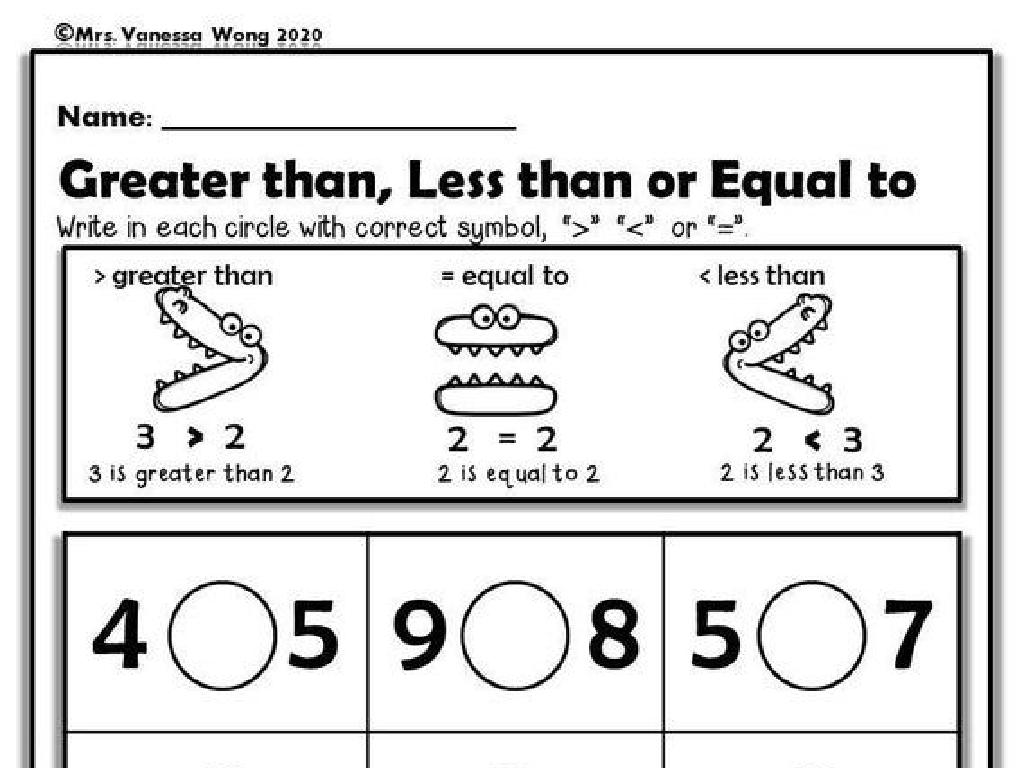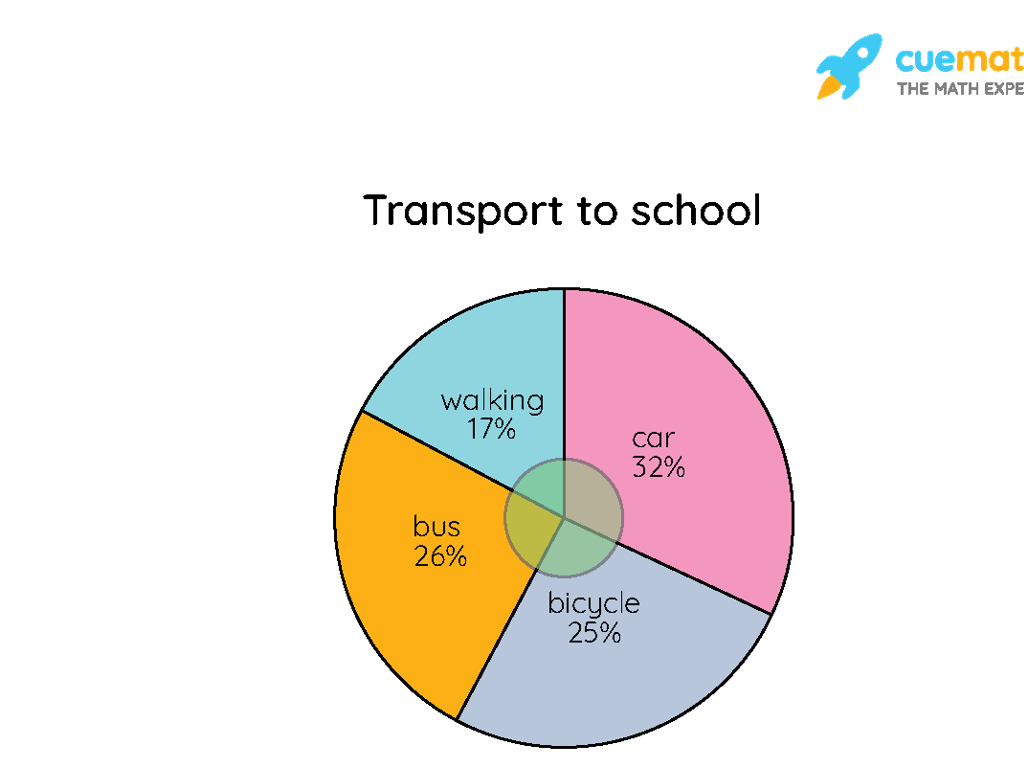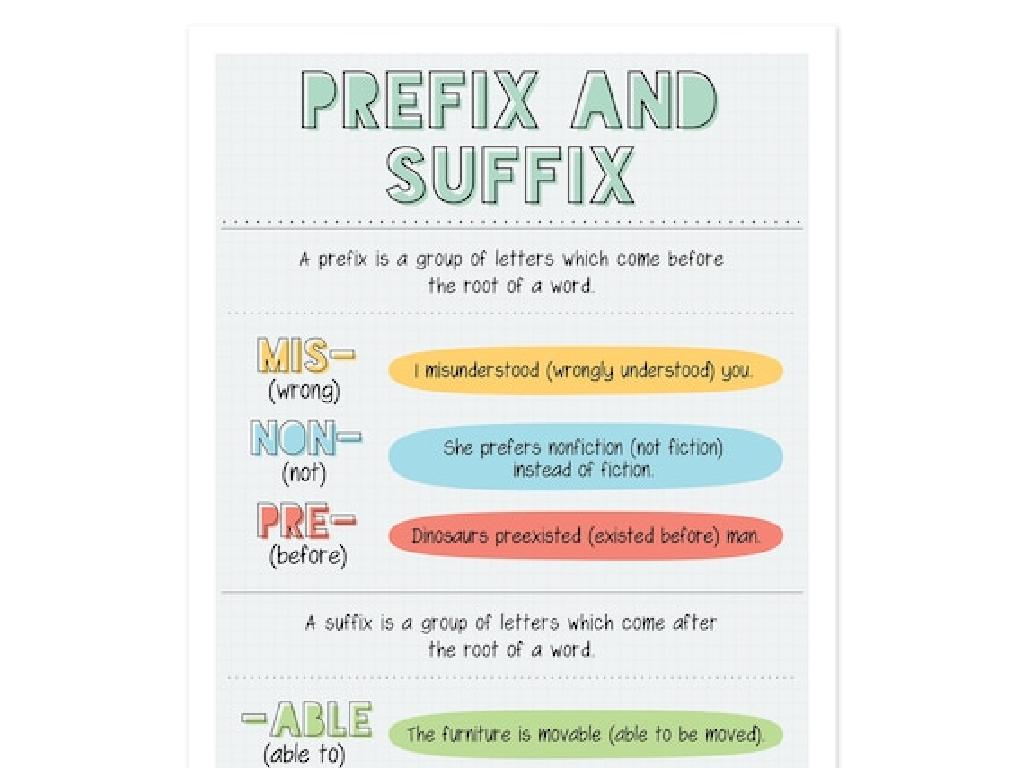Irregular Past Tense: Review
Subject: Language arts
Grade: Seventh grade
Topic: Verb Tense
Please LOG IN to download the presentation. Access is available to registered users only.
View More Content
Irregular Past Tense Verbs Overview
– Understanding verb tenses
– Verb tenses indicate time of action
– Defining irregular verbs
– Irregular verbs don’t add -ed for past tense
– Irregular verbs uniqueness
– They don’t follow regular conjugation rules
– Significance of irregular verbs
– Knowing them is crucial for correct language use
|
This slide introduces the concept of irregular past tense verbs to seventh graders. Begin by explaining verb tenses and their role in indicating when an action takes place. Then, define irregular verbs as those that do not follow the standard rule of adding -ed to form the past tense. Discuss why these verbs are unique and don’t conform to regular conjugation patterns, perhaps due to historical language evolution or usage patterns. Emphasize the importance of learning irregular verbs for proper language use, as they are common in English. Provide examples of irregular verbs and their past tense forms, such as ‘go’ becoming ‘went’, and ‘buy’ becoming ‘bought’. Encourage students to think of more examples and use them in sentences to reinforce their understanding.
Irregular Past Tense: Regular vs. Irregular Verbs
– Regular verbs end in ‘ed’
– Irregular verbs follow patterns
– No simple rule, often memorization needed
– ‘Walk’ to ‘Walked’ vs. ‘Go’ to ‘Went’
– Contrast regular ‘walked’ with irregular ‘went’
– Practice with more examples
– Find patterns like ‘sing’ to ‘sang’, ‘run’ to ‘ran’
|
This slide aims to review the difference between regular and irregular verbs in the past tense. Regular verbs typically end in ‘ed’ when changed to past tense, while irregular verbs do not follow a consistent pattern and often need to be memorized. Provide clear examples to illustrate the difference, such as ‘walk’ becoming ‘walked’ and ‘go’ becoming ‘went’. Encourage students to identify patterns among irregular verbs, which can sometimes help with memorization. Instruct students to practice by converting present tense verbs to past tense, identifying which are regular and which are irregular, and using them in sentences.
Mastering Irregular Past Tense Verbs
– Common irregular verbs list
– Verbs that don’t follow standard rules, e.g., go-went, buy-bought
– Practice pronouncing verbs
– Focus on tricky pronunciations: ‘read’ vs. ‘read’, ‘write’ vs. ‘wrote’
– Memory tricks for verb forms
– Associate images or stories with verbs to aid recall
– Interactive verb quiz
|
This slide aims to review irregular past tense verbs, which are often challenging for students. Start by providing a list of commonly used irregular verbs for students to familiarize themselves with. Emphasize the pronunciation of these verbs, especially those that sound different in the past tense. Share memory tricks, like mnemonic devices or visual associations, to help students remember the irregular forms. Conclude with an interactive quiz to reinforce learning. Encourage students to create sentences using the verbs from the list to enhance their understanding.
Irregular Past Tense in Sentences
– Construct sentences with irregular verbs
– Use verbs that don’t follow regular ‘-ed’ ending
– Grasp context for proper verb usage
– Words around the verb tell us about the time of action
– Activity: Spot irregular verbs
– Find and underline irregular verbs in given sentences
|
This slide is aimed at reinforcing the knowledge of irregular past tense verbs through sentence construction and context understanding. Students should be reminded that irregular verbs do not follow the typical ‘-ed’ ending pattern and must be memorized. Context is crucial as it helps determine the correct form of the verb to use. The activity involves identifying irregular verbs within provided sentences, which will help students recognize and familiarize themselves with these verbs in a practical setting. For the activity, prepare sentences with a mix of regular and irregular verbs, and ask students to underline the irregular ones. Possible variations of the activity could include creating their own sentences using a list of irregular verbs, converting present tense sentences into past tense, or even a small quiz game where students guess the past tense form of irregular verbs.
Irregular Past Tense: Exceptions and Oddities
– Verbs with complete changes
– ‘go’ becomes ‘went’, ‘be’ becomes ‘was/were’
– Verbs unchanged in past tense
– ‘cut’ and ‘put’ remain the same
– Activity: Matching game
– Match verbs like ‘run’ to ‘ran’
– Understanding irregular verbs
|
This slide focuses on the irregularities in past tense verb forms. Some verbs change completely when they move from the present to the past tense, which can be confusing. For example, ‘go’ changes to ‘went’, and ‘be’ changes to ‘was’ or ‘were’. Other verbs, like ‘cut’ and ‘put’, stay the same in the past tense. The class activity involves matching the base form of a verb to its past tense counterpart, which will help students recognize and memorize these irregular forms. For the activity, prepare a list of base verbs on one side and their irregular past tense forms on another, and have students draw lines to match them. This interactive exercise will reinforce their understanding of irregular verbs and how they differ from regular verbs.
Practice Makes Perfect: Irregular Past Tense
– Complete the fill-in-the-blank exercise
– Correct sentences with mistakes
– Identify and fix errors in verb usage
– Create sentences with irregular verbs
– Use at least 5 different irregular verbs
– Share your sentences with the class
– Practice speaking and get peer feedback
|
This slide is designed to reinforce the understanding of irregular past tense verbs through practice. Begin with a fill-in-the-blank exercise to allow students to apply their knowledge in a structured format. Then, move on to correcting sentences that contain mistakes in verb tense to develop their editing skills. Encourage creativity by having students create their own sentences using a list of irregular verbs, ensuring they understand the correct past tense forms. Finally, have students share their sentences with the class to practice speaking and to receive peer feedback. This will help solidify their grasp of irregular verbs and enhance their confidence in using them.
Interactive Class Activity: Irregular Verb Charades
– Engage in Irregular Verb Charades
– Groups act out an irregular verb
– Guess the verb and its past tense
– Discuss past tense forms post-activity
– Reflect on the activity and review the past tense forms of the verbs guessed
|
This interactive class activity is designed to help students review irregular past tense verbs in a fun and engaging way. Divide the class into small groups and have each group act out an irregular verb without speaking. The rest of the class must guess the verb and its past tense form. After each round, take the time to discuss the past tense of the acted-out verbs, emphasizing the irregular forms. This activity not only reinforces the students’ understanding of irregular verbs but also promotes teamwork and critical thinking. Possible verbs to act out include ‘run’, ‘sing’, ‘write’, ‘drive’, etc. Ensure that each group has a chance to perform and guess, and encourage students to use their creativity in their performances.
Review and Reflect: Irregular Past Tense
– Recap today’s irregular verbs
– Share your learning takeaways
– Think about how these verbs appear in daily language
– Engage in Q&A session
– Ask any lingering questions or clarify doubts
– Reflect on verb usage
– Consider the importance of correct past tense in communication
|
This slide aims to consolidate the students’ understanding of irregular past tense verbs. Begin with a brief recap of the lesson, highlighting key irregular verbs covered. Encourage students to share what they’ve learned, perhaps by providing examples or constructing sentences using the verbs discussed. Open the floor for a Q&A session, allowing students to ask questions or seek clarification on any points of confusion. Finally, guide students to reflect on the importance of using the correct past tense in both written and spoken communication, emphasizing how it affects clarity and understanding in everyday interactions.
Homework: Irregular Verbs in Action
– Write a short story for homework
– Include 10 irregular verbs
– Verbs like ‘go’ became ‘went’, not ‘goed’
– Use past tense correctly
– Check verbs in past tense list to ensure correct usage
– Share your story in class
|
This homework assignment is designed to reinforce the students’ understanding of irregular verbs in the past tense. They are tasked with writing a creative short story that incorporates at least 10 different irregular verbs used correctly in the past tense. This will help them to internalize the irregular forms. Remind students to refer to the list of irregular verbs provided during the lesson and to double-check their work for accuracy. In the next class, students will have the opportunity to share their stories, which will not only showcase their understanding but also allow them to practice speaking and listening skills. Encourage creativity and remind them that the focus is on correct verb usage.






